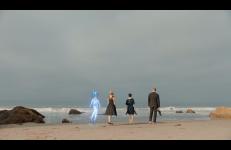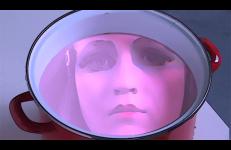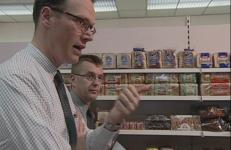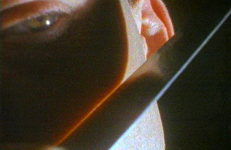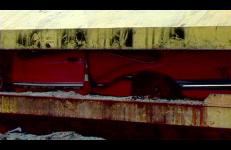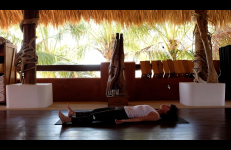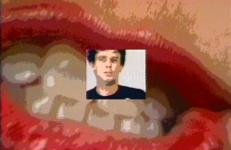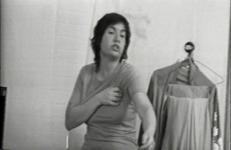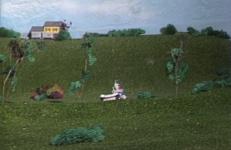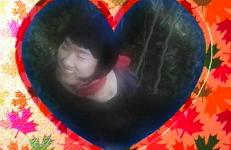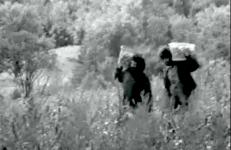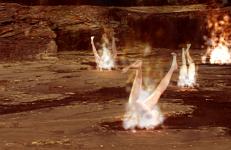Contra-Internet: Jubilee 2033 is a re-imagining of scenes from filmmaker Derek Jarman’s 1978 queer punk film Jubilee, starring Susanne Sachsse and Cassils. Contra-Internet: Jubilee 2033 follows author Ayn Rand (Susanne Sachsse) and members of her Collective, including economist Alan Greenspan, on an acid trip in 1955. Guided by an artificial intelligence named Azuma, they are transported to a dystopian future Silicon Valley.
Consumer culture
County Down is a cross-platform, episodic, digital video, exploring an epidemic of psychosis among the adults in a gated community, coinciding with a teenage girl’s invention of a designer drug. A rave-culture period-piece that harnesses the unwarranted optimism of the 1990s, County Down presents a society so obsessed with novelty and consumerism that it euphorically sews the seeds of its own destruction. Tracking the genesis of our current political climate, the ensemble cast banks on cultural appropriation and a constant din of micro-aggressions.
Uncomfortable journeys through the work and ideas of Christopher Cozier, a leading contemporary artist in the Caribbean. The video presents Cozier's witty and incisive drawings, installations and videos in the context of post-independence Trinidad with its oil-rich economy, complicated ethnic politics, and vibrant cultural forms.
Brave new shopping worlds are being created. What have mall owners, architects, surveillance technicians, and supermarket workers done to turn human subjects into pure streams of consumers, into the perfect inhabitants of shopping mall paradise?
Crush is the story of a man who wants to turn into an animal as told by the man himself, and one or two observers. He employs a variety of techniques to transform himself into a beast, including cutting off parts of his body, exercising, swimming; he wants to return to the water, to speed up evolution a little. Has he gone mad, or is he just tired of being human? As the narrator descends into private obsessions, we begin to perceive the distorted outlines of reason which guide his descent.
Crush consists of six chapters, the first five portray the transport, bending, piercing, and crushing of various vehicles, cars and trucks. The final vignette is a coda showing the flattened steel being piled onto a truck against a background of a forest.
The language and imagery related to celebrity perfumes (both descriptive and visual) are a starting point to think about consumer desires and the corruptness of branding. Give us your songs, your smells and we will give you everything. The rich get richer, everyone smells poorer.
Dark Sun Squeeze is a darkly meditative exploration of a sewage treatment plant, revealing the hidden rhythms and bizarre journey of raw human waste. The images of flowing waste speak of decay, destruction, of madness inherent in excessive consumption. At the same time they reveal the redemptive side of detritus, its regenerative potential, the sublime that exists in the abject.
“Paweł Wojtasik delivers the final word on the absolute value of news, money, politics and just about everything else.”
-- Holland Cotter, The New York Times, Oct 1, 2004
Dead Body Pose absurdly touches the contemporary bubble, encapsulating both connectivity and spirituality, a connection fueled by the global capitalistic consumption of the self. The more we are in the connectivity loop, the more thirsty we are for spirituality and assign it "a time slot". In the video, the artist performs the yoga rest pose Shavasana (dead body pose) as computer cursors come out of her body cavities and connect to their own spirituality together with her chakra affirmations.
An insert square of a man running is superimposed over a magnified mouth that speaks to him — first in nurturing encouragement, then with a no-win Mommie Dearest kind of criticism. Originally presented as an installation on six monitors, Deadline focuses on “the stress man feels in the urban environment,” using a range of digital video effects to stretch, compress, flip and fracture the image.
A specific period of late-night TV channel surfing is dissected and manipulated through fast forward and freeze frame. Cultural icons (Roseanne, Mary Tyler Moore, The Golden Girls) can occasionally be glimpsed amongst the detritus, while the echoing and ghostly soundtrack pays homage to the cultural isolation of solitary viewing.
Nazlı Dinçel’s hand-made work reflects on experiences of disruption. They record the body in context with arousal, immigration, dislocation and desire with the film object: its texture, color and the tractable emulsion of the 16mm material. Their use of text as image, language and sound imitates the failure of memory and their own displacement within a western society. Born in Ankara, Turkey, Dinçel immigrated to the United States at age 17. Dinçel resides in Milwaukee, WI where they are currently building an artist run film laboratory.
A reverse striptease, non-stop comedic monologue about shopping for clothes, while eating corn nuts. Dressing Up was inspired by the artist’s mother’s penchant for bargain hunting. Mogul produced Dressing Up as a student in the feminist art program at the California Institute of the Arts in 1973.
Easy Living ingeniously depicts leisure life in suburban America with a cast of little plastic dolls and miniature model cars—the toys that shape American children's ideas about success and adult life—focusing on a typical day in the life of an "all-American" west coast town, where recreational activity and car culture prevail.
A project of the Contemporary Art Television Fund produced by artists Chip Lord and Mickey McGowan with Jules Backus.
This title is also available on Chip Lord Videoworks: Volume 1.
An animation that combines narrative experimentation with the abstraction of motion capture about two groups of misfit hackers in a city of traffic. They speak a language of advertising, corporate branding and self-help, while engaging in a battle to control traffic lights. The discovery that the entire social code is embedded in the access code that regulates traffic lights, begins a twisted ride of cultural espionage techniques. These techniques include surveillance cameras and costumes, as they attempt to untangle the social codes of characters caught in an endless rush hour.
In response to the 1994 Republican campaign Contract with America that ushered in the first GOP House majority in over 42 years, Ligorano Reese screen printed men’s and women’s cotton briefs with the face of Newt Gingrich on the crotch and the Contract with America legislative agenda on the seat. The underwear became an overnight sensation when elected officials in Washington received them and became so infamous the Republican National Committee threatened the artists with copyright and trademark infringement.
Failing Up describes career advancement despite bad decisions, bankruptcies, and intellectual mediocrity. In this short film, the Manhattan real estate holdings of the King of Failing Up are catalogued and synced to a soundtrack that suggests how it feels to be one of his subjects.
Whip pans, zooms, lens twists, and bursts of stop-frame animation transform eight minutes of borrowed audio from Home Alone 2 (a film that features a cameo of the current US President) into a political work of slapstique concrete.
This sprawling drama about a group of country folk sucked into the fashion world of magazine layouts and romantic intrigue features a cast of glamorously garbed gals and good-natured bumpkins. Produced in collaboration with his students at the San Francisco Art Institute, the picture delivers high-octane antics fueled by the $800 budget and creative desperation typically inherent in these types of endeavors. The cast is large and labors valiantly with the high speed shooting schedule and color saturated subplots.
A two-part study of the self-sustaining lifestyle of a communal farm in Vermont.
"In the free space of the commodity, I digitally took apart moving image sequences and re-animated them into an encoded montage to create a metaphor of experience where the viewer feels like a fiber optic cable has been hard-wired into their consciousness — a look where the image is simultaneously visible and invisible. My hope was to create a work that re-presented information as a kind of subliminal narrative that critiqued the currently popular technotopian rhetoric."
— Les LeVeque
At a garbage transfer station in suburban Connecticut, seagulls make a home for themselves among the mountains of trash, skillfully co-existing with massive bulldozers, trucks and masked workers.
With an all-female cast, featuring Suzie Bright as John Lennon, Cecilia Dougherty's Grapefruit plays with the romanticized history of the iconic Fab Four, gently mocking John and Yoko’s banal squabbles and obsessive rituals of self-display. Based obliquely on Yoko Ono’s book, the piece works on many levels to reposition this mythic tale of the Beatles by casting '80s women in mod drag—effectively mapping the lesbian sub-culture onto heterosexual mass culture.
Conceptual artist Hans Haacke’s two most notorious works took unsavory Manhattan real-estate dealing as their subject, which triggered the cancellation of his exhibition Real Time Social System at the Guggenheim Museum in 1971. With the conscientiousness of an investigative reporter, Haacke continues to scrutinize the rough edges between art and life.
Parnes moves further into her interrogation of horror genres and the art world, with their sometimes over-lapping cults of personality. Grappling with the danger of beauty without criticality, Hollywood Inferno takes the viewer through the alienating world of a teenager named Sandy, a modern-day Dante, and follows where her aspirations toward stardom lead her.




